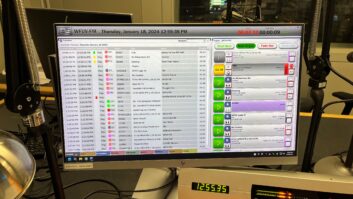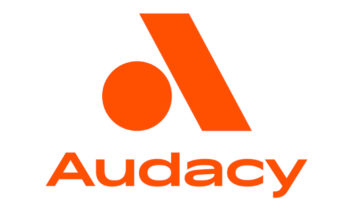Ahead of the June 30 migration, Radio checked in with Cumulus/Westwood One Senior Vice President of Engineering Greg Monti. Read a previous interview on this subject with Learfield CE Randy Williams, here.
�
Radio magazine:Have the majority of stations you are responsible for migrated to AMC-18? If there any that have not yet done so, can you tell me how many?
Greg Monti: The majority have repointed, but not a huge majority. At our count on June 13, 66% of our XDS receivers (of those that report back to us over the internet) have repointed to AMC-18. The percentage is similar for our Wegener satellite system. That still means that over 1,000 XDS receivers and over 800 Wegener receivers are not repointed yet. This is not ideal with about two weeks remaining until the June 30 deadline.�
Radio:What has been the most challenging aspect of the transition?
Monti: The toughest part has been getting stations to take the job seriously. The networks first made their signals available on AMC-18 in early February. About six weeks later, 29% of the transition time had gone by, but only 9% had repointed to AMC-18. We knew the winter weather would impede outdoor work and indeed the rate of change has picked up since warmer weather has arrived. But folks are still waiting until the last minute. Some are encountering shortages of engineers willing to do the work, and shortages of downlink antennas and parts.
Radio:��AMC-18 only is predicted to have five �useful years� left before you must again transition to SES-11, although that change will not require repointing. In light of that, how was AMC-18 chosen?
Monti:�After reviewing the offerings of the C-band space segment industry, the networks chose be on SES-11, which would have been a brand-new satellite, if it had launched on time. Remember that SpaceX Falcon 9 rocket that blew up on the launch pad in September 2016? That was the same model rocket that was slated to be the launch vehicle for SES-11 several months later. That failure, and the redesign work that followed, have delayed the launches of all Falcon 9 users, each of them waiting their turn in line. Later this year, we expect that a launch date for SES-11 will be announced. It’ll be worth the wait because we will get a new satellite with 15 years of life ahead of it.�
Radio:��What do broadcast engineers need to be aware of (but may not already know) in order to ensure a successful transition for their station(s)? Any tips?
Monti:�The biggest issue is setting the polarization of the feed element on each downlink. The radio network signals are vertically polarized on both the old and new satellites. On the old AMC-8, we did not experience much interference from users of the horizontally-polarized transponders. Now, on AMC-18, some networks, including Westwood One, have a “noisy neighbor” overlapping our frequencies but polarized 90 degrees away. A good tip is to point and peak on the new AMC-18 first, then adjust polarization to minimize interference. Then peak the pointing a second time and polarize again. The ability of your dish to null out the cross-polarized signals is “blurred” if the pointing is a little off, so it’s worth doing both twice. A spectrum analyzer, if you can beg, borrow or steal one, is a great tool for this. On our transition website, there are spectrum analyzer screen shots that show what the network signals look like on AMC-18 when the polarization is set cleanly.
One more thing: Cross-polarized interference is expected to get worse after the new SES-11 is launched. �Why? Because new customers who have signed leases on the new satellite will bring up their carriers for the first time. Others may increase their power or bandwidth from what they use today. So, getting polarization correct now will help prevent issues in the future.
Radio:��Have you heard any interesting stories from stations that have already migrated or begun working on the transition?
Monti:�A station in upstate New York had three old dishes on their property. Two of them were left behind by firms that had once leased space on the broadcast tower, but are now gone. The existing AMC-8 dish could be repointed, but was smaller than the ideal 3.8 meter size. A second dish had a rusted mechanism. And a third downlink, the largest one, had a heaved foundation so that the king post was no longer vertical. This meant that setting the east-west azimuth would have an unpredictable effect on the elevation angle.
The contract engineer for the site, Bob Sauter (shown above � in a photo he provided � with a downlink whose vertical post is no longer vertical due to winter heaving), managed to repoint the dish with the heaved foundation to AMC-18 anyway, and then repointed the legacy AMC-8 dish to AMC-18 as a backup. Although neither downlink is perfect, it is unlikely that both of them would fail in the same way, or on the same date in the future. So several more years of life are now being squeezed out of them.
[Sauter is chief engineer of North Country Public Radio in Canton, NY. He also does contract work for other stations.]
�
�












